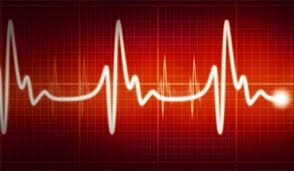Long COVID News: Postural Orthostatic Tachycardia Syndrome (POTS) And Dysautonomia Are Common Occurrences In Long COVID
Long COVID News - Postural Orthostatic Tachycardia Syndrome (POTS) Feb 07, 2023 2 years, 2 months, 2 weeks, 4 days, 10 hours, 47 minutes ago
Long COVID News: A new clinical update by researchers from Karolinska University Hospital, Stockholm-Sweden and Lund University, Malmö-Sweden reports that autonomic dysfunction and postural orthostatic tachycardia syndrome (POTS) are common occurrences in Long COVID.

Typically, autonomic dysfunction develops when the nerves of the ANS (autonomic nervous system) are damaged. This condition is called autonomic neuropathy or dysautonomia. Autonomic dysfunction can range from mild to life-threatening as the ANS controls several basic functions including heart rate, body temperature, breathing rate, digestion and sensation. It can affect part of the ANS or the entire ANS. Autonomic dysfunction occurs when the autonomic nervous system, which controls functions responsible for well-being and maintaining balance, does not regulate properly.
Postural tachycardia syndrome (POTS) is an abnormal increase in heart rate that occurs after sitting up or standing. POTS symptoms are often due to a sudden surge in heart rate and the body struggling to pump blood back to the heart quickly enough. POTS happens when the autonomic nervous system doesn't work as it should.
The symptoms of POTS include but are not limited to lightheadedness or dizziness, (occasionally with fainting), difficulty thinking and concentrating (brain fog), fatigue, intolerance of exercise, headache, blurry vision, palpitations, tremor and nausea.
The post-acute sequelae of COVID-19 or Long COVID present major problems for many patients, their physicians and the health-care system. They are unrelated to the severity of the initial infection, are often highly symptomatic and can occur after vaccination.
Many sequelae involve cardiovascular autonomic dysfunction, with postural orthostatic tachycardia syndrome in 30% of individuals. Prognosis is unknown, and treatment is still unsatisfactory.
The clinical update was published in the peer reviewed journal: Nature Reviews Cardiology.
https://www.nature.com/articles/s41569-023-00842-w
In our previous
Long COVID News coverages, we had already shown that SARS-CoV-2 infections can lead to cardiovascular autonomic dysfunction in many.
https://www.thailandmedical.news/news/breaking-covid-19-new:-european-meta-study-validates-that-sars-cov-2-infections-can-cause-cardiovascular-autonomic-dysfunction-in-many
When the COVID-19 pandemic was declared in early 2020, no one anticipated the long-term consequences of the SARS-CoV-2 infections.
Initially, the focus was only on survival from acute infection. However, during mid-2020 emergence of a new group of patients known as post-COVID-19 long-haulers took place.
Many of these individuals reported to be constantly tired, often young or middle-aged women, incapable of work, and had multiple symptoms such as chest pain, exercise intolerance, tachycardia, and heart
palpitations.
Numerous physicians, neurologists, and cardiologists indicated some of these symptoms to be ideal for the symptoms of postural orthostatic tachycardia syndrome (POTS). Additionally, other cardiovascular autonomic dysfunctions like inappropriate sinus tachycardia were also reported.
Postural orthostatic tachycardia syndrome or POTS is now indicated to be a major phenotype in the new post-acute COVID-19 syndrome that occurs in about 30 percent of highly symptomatic patients. However, other forms of cardiovascular dysautonomia like hypotension or orthostatic intolerance and vasovagal reflex susceptibility, have also been observed.
This clinical update aimed to analyze the post-acute sequelae of COVID-19 that can pose a threat to patients, their doctors, and the healthcare system.
Typically, the confirmation of POTS requires correctly interpreted cardiovascular autonomic testing. There was an increase in chronotropic response of more than 30 beats per minute when standing, as well as chronic fatigue and orthostatic intolerance along with maintained blood pressure. Additionally, other symptoms are also involved, such as sleep disturbances, brain fog, migraine, muscle weakness, and chest pain. This resulted in the referral of patients to various clinical specialties due to confusion regarding diagnosis.
Many recent studies have highlighted the need for more diagnostic vigilance, new therapeutic options, and greater availability of healthcare resources to better understand the place of POTS in the post-COVID-19 landscape.
Postural orthostatic tachycardia syndrome or POTS and other related conditions have been reported to develop three months post severe acute respiratory syndrome coronavirus 2 (SARS-CoV-2) infection but can also develop following vaccination.
Hence this implies that such factors can trigger an autoimmune response in susceptible individuals.
Additionally, these cardiovascular dysautonomias have been reported to be independent of the severity of the initial infection.
More detailed research is warranted to understand the immunomodulating agent associated with misdirected or overstimulated immune responses. Moreover, research should also focus on identifying genetic or epidemiological markers of increased cardiovascular dysautonomia risk.
Worryingly, the post-COVID-19 cardiovascular autonomic dysfunction can lead not only to a POTS-like pattern but also to blood pressure instability, tachycardia at rest, and local circulatory disorders.
Also, the various symptoms observed in POTS might be due to microvascular dysfunction along with inadequate macrovascular and microvascular responses.
Already a few studies indicated that microvascular dysfunction is an important mechanism of post-COVID-19 complications.
Typically, all such dysautonomic phenotypes can coexist and primarily affect young and middle-aged women. Therefore, phenotyping of POTS in cohorts of patients with post-acute COVID-19 syndrome is required to identify reliable biomarkers and develop effective therapies for the syndrome.
For the latest
LONG COVID News, keep on logging to Thailand Medical News.
